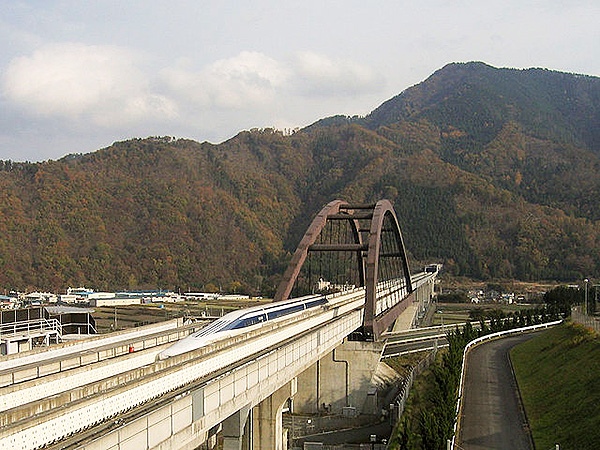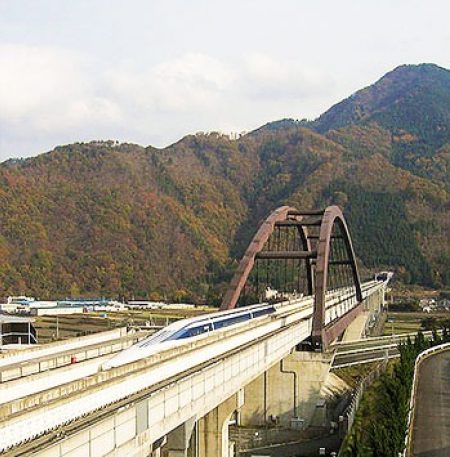International Construction News: $52-Billion Magnetic Levitation Train Project Underway in Japan
The Chuo Shinkansen project is a magnetic levitation ("maglev") railway project currently underway in Japan, being built by the Central Japan Railway Company. While Japan is already famous for its high-speed bullet trains (which have been in operation since 1964), this new maglev train line will reportedly cut rail travel time between Tokyo and Nagoya by 50% when completed in 2027. With trains traveling faster than 265 mph, this will decrease the time for the 178-mile trip to just 40 minutes.
With a projected cost of $52-billion (U.S.), the project is one of the most expensive "mega projects" currently underway in the world. The first part of the maglev project, which started construction in late 2014, is the 178-mile route connecting Tokyo to Nagoya. Almost 90% of that route will be through tunnels or on tracks set below ground level. Powerful magnets will allow the high-speed trains to float above the tracks, enabling efficiency and smooth, high-speed travel.
The levitating force is generated between superconducting magnets on the trains and coils on the track. Magnetic coils are used for both levitation and propulsion. Trains are accelerated by alternating currents on the ground producing attraction and repulsion forces with the coils on the train.
When completed in 2027, the system will cut the trip from Tokyo to Nagoya to just 40 minutes, with top speeds approaching 314 mph. The new line is being built by first expanding upon an existing maglev line: the Yamanashi test track, which was initially established for maglev research and development in the 1970s. In the long term, there are plans to extend the service to Osaka (which is more than 314 miles from Tokyo). That extended route is expected to be completed some time between 2037 and 2045.

